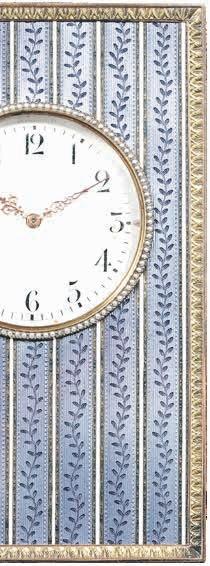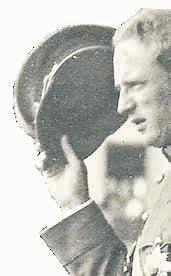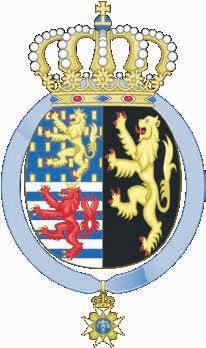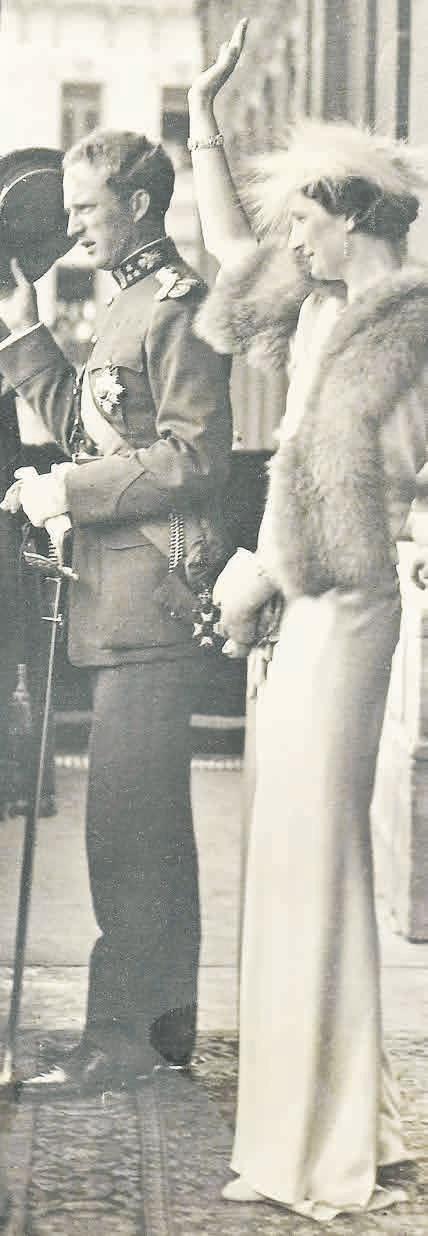
Estimate: CHF 30 000–50 000
Sold: CHF 127 000
From


Estimate: CHF 30 000–50 000
Sold: CHF 127 000
From
In 1882 Peter Carl Fabergé (1846–1920) took over his father’s business. With his brother, he quickly turned it into an international phenomenon: a design-oriented jewellery artist, with a penchant for colour; reviving the lost art of enamelling. The brothers added a substantial repertoire of bespoke objects, including Imperial Easter eggs – then considered the pinnacle of goldsmithing – as well as small desk clocks – highly sought-after at the Russian imperial court. Here, we find a rectangular example with a gold mount bordered by a frieze of heart-shaped scallops, enhanced by a blue guilloché enamel decoration featuring leaf garlands. The white dial is set with pearls and adorned with black Arabic numerals and openworked scrolled rose gold hands. Made in 1907 by goldsmith Henrik Wigström, Fabergé’s official craftsman, this clock came from the collection of Princess Ingeborg of Denmark (1878–1958) and later from that of her daughter, Astrid of Sweden (1905–1935) Queen of the Belgians – pictured here with her husband, King Leopold III (1901–1983).
Probably presented in 1908 on the occasion of Prin cess Ingeborg’s 30th birthday, possibly by her aunt – the most elegant Empress of Russia – Maria Feodorovna (1847–1928), this clock remained in the same royal family to this day.
In 1986, it was loaned by Gstaad habituée HRH Grand Duchess Joséphine-Charlotte of Luxembourg, daughter of Queen Astrid, to be included in the major retrospective organised at the Kunst halle Munich entitled Fabergé: Jeweller to the Court of the Tsars, bringing together more than 650 pieces representing the goldsmith’s prestige.
As a child, HRH Grand Duchess Joséphine-Charlotte (1927–2005) attended the Chalet Marie-José in Gstaad’s Oberbort. Both her brothers followed, TM King Baudouin (1930–1993) and King Albert II of the Belgians. Coincidentally, the actual grand duchess of Luxembourg also was a pupil.

At a time when European royal and imperial dynasties were closely intertwined, the exchange of gifts had both a familial dimension and subtle diplomatic significance. The growing prestige of the Russian imperial court, coupled with lavish patronage, provided an ideal environment for the development of an original Russian decorative craft, combining Western elegance with a strong imperial identity. Founded in 1842 by Gustav Fabergé, the house achieved international renown under the leadership of his son, Peter Carl Fabergé, who became Official Jeweller to the Imperial Court in 1885. Appearing at auction for the first time last month in Geneva at Piguet, it exemplifies the chromatic richness –drawn from the mastery of more than 140 shades developed by Fabergé – that transforms a utilitarian object into a work of art.

BY ALAN NAZAR IPEKIAN
